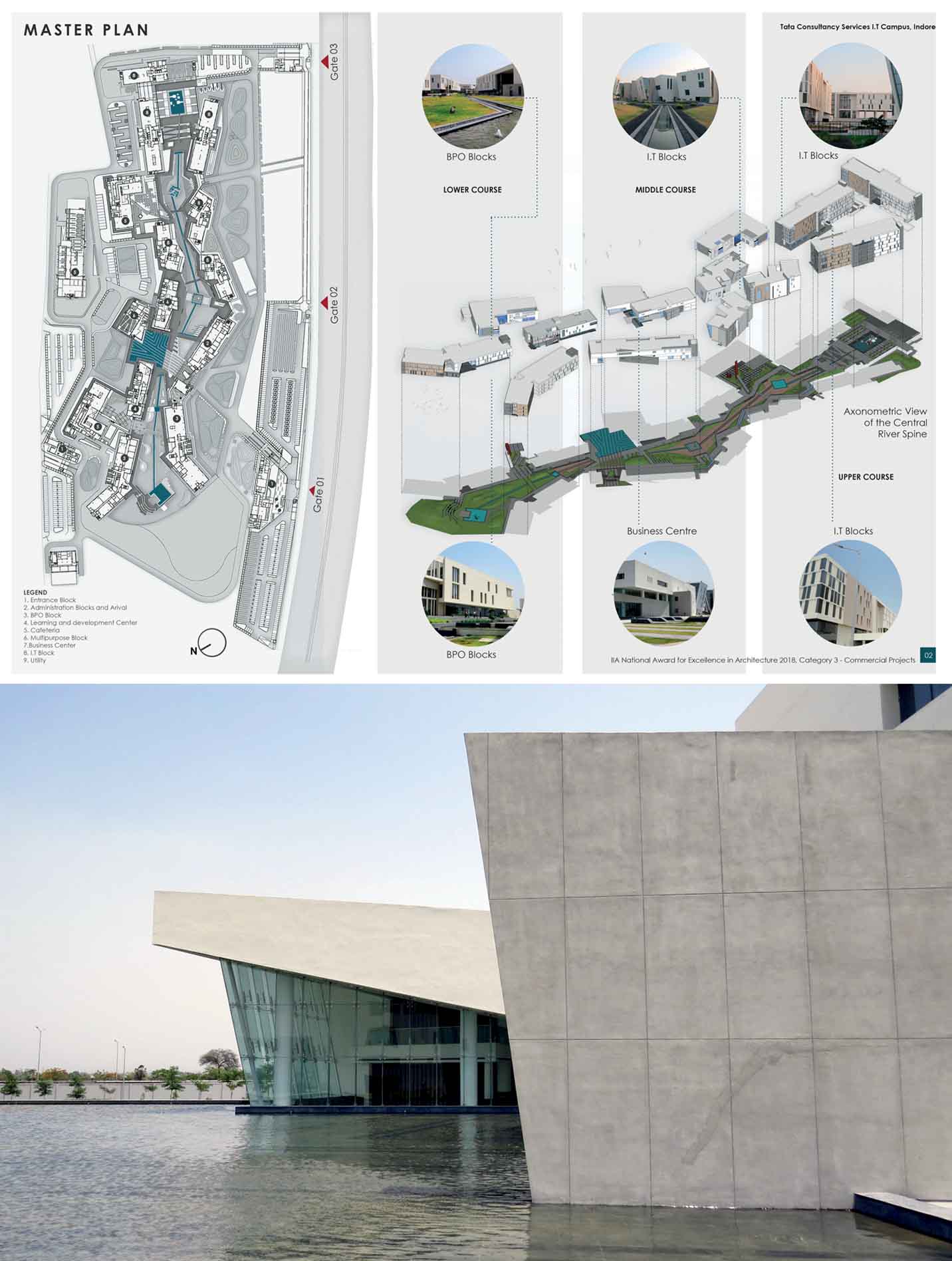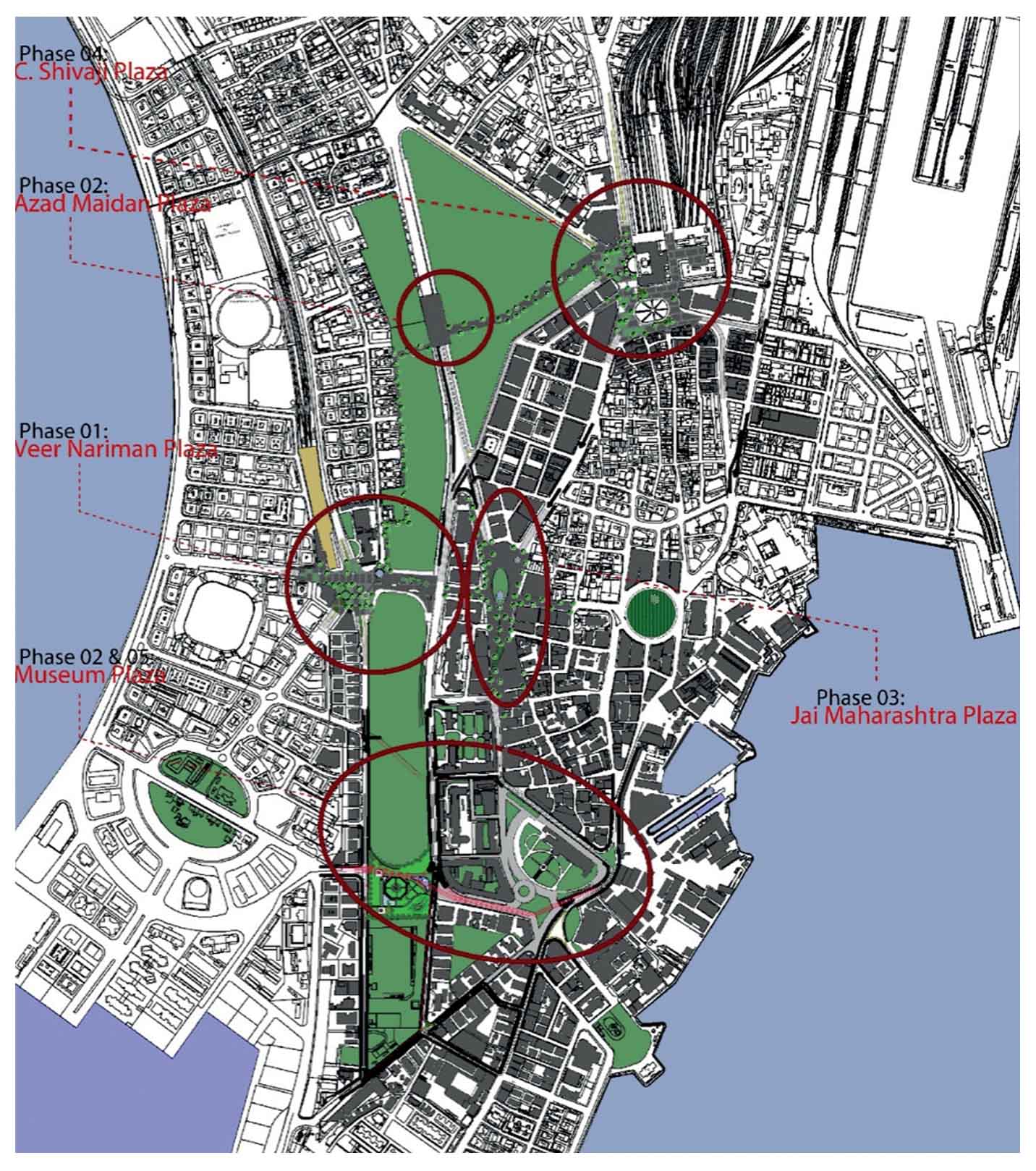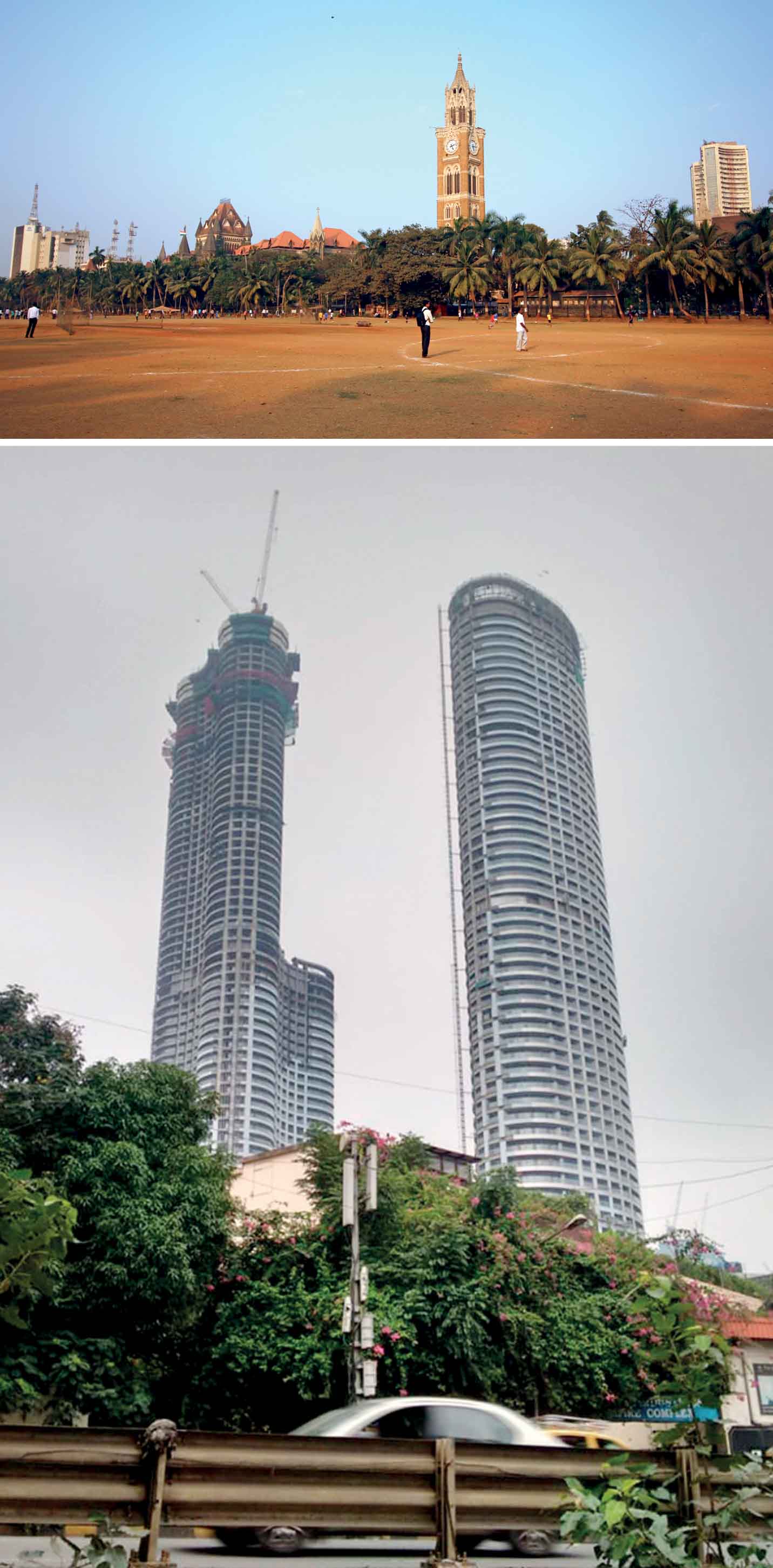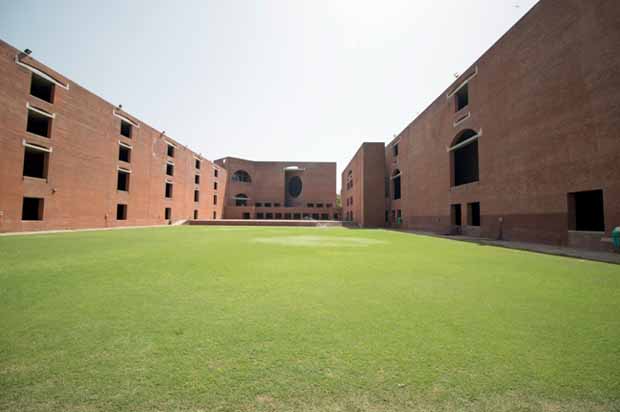Vinayak Bharne: As an accomplished and experienced architect working in India, how do you see the reception and recognition of Climate Change in the profession? Are we genuinely, as a professional community, making strides towards rethinking architectural design and practice?

Brinda Somaya: Architects do not work alone; they work not as stars, but as constellations.
The relationship between the built form and the environment continues to be a complex interaction of site, climate, technology, natural forces, building materials and the human presence.
I believe my buildings speak for themselves. I am an Indian, and all that I am comes from my heritage. It is an intrinsic part of my being and will naturally reflect in my work in many ways. Diversity in my work is what I have enjoyed the most. I have built in places all the way from the Himalayas to the South of India, from Bengal to Kutch and through the central plains in the heart of our country, from Jharkhand to Indore, Madhya Pradesh and from Uttaranchal to Kodagu, Karnataka. Building types have included reconstruction of villages to hi-tech campuses, from orphanages and animal hospitals to state-of-the-art corporate headquarters, from the village school to the most elite schools of Mumbai and from conserving iconic heritage buildings to converting garbage dumps into parks. What could be more fulfilling?
I believe the demand is for a professional concern for the environment and an improved quality of human life for all Indians and hence the requisite to train a new kind of professional who can intervene and be effective both in the rural and urban settings. We need designers who can plan, design and implement new developments and if we play the role of the traditional architect, we cannot meet this need. We have to go beyond buildings and work with programmes that transform society. The limitations of a developing economy can result in a creative response rather than as constraints in our work. So, design must be part of a process.
So where do people like me fit into all this? Many of us have lived and trained in the west and are committed to the planning principles of modern architecture. Apart from the planning and building processes, the difficulties of designing and building in an emerging market affects us in other ways as well. For instance, do we have a role to play in the environment of the poor? Few of us are professionally committed to the solution of the housing and environmental problems faced by the underprivileged. The domain of most current architectural work is the marketplace of India’s affluent middle class. Hotels, offices, multiplexes, shopping malls, housing, factories and recreational buildings form the bulk of this work. Living and working as an architect in the India of the ’80s, ’90s and now in the 21st century has involved challenges far more varied in nature than those in conventional architectural projects in most parts of the world.
Architects do not work alone; they work not as stars, but as constellations
You have been a dominant voice for public space design as a driver for both urbanism and heritage conservation. Could you elaborate on this agenda through your proposal for Mumbai?
Mumbai is a complex yet amazing city, home for its 22 million (Mumbai Population, 2020) residents. Slums, malls, chimneys, mangroves, leopards, art galleries, pubs, churches, temples, mosques, synagogues and fire temples all co-exist.
The Mumbai Esplanade Project (MEP) was a pro bono project that Somaya & Kalappa Consultants Pvt. Ltd. (SNK) did in collaboration with Professor Shivjit Sidhu, Principal Architect, Apostrophe. This proposal was undertaken only out of our concern and love for the city and its residents.
For lakhs of harried commuters, the end of the train line marks the start to a set of hurdles. Alighting at Churchgate Station, in the main business district of Nariman Point and Hutatma Chowk, the commuter faces the onerous task of choosing between climbing down slippery, dirty stairs into a crowded, dingy subway or risking life and limb, while jaywalking across rush hour traffic to reach their offices. Subways and skywalks are often outdated and inefficient as traffic management infrastructure and people choose to avoid them. The answer lies in catering to pedestrians; especially at high traffic areas such as train terminals.
According to a consortium of civic advocates and urban designers working on The Mumbai Esplanade, an urban plaza is the most efficient solution for pedestrian comfort and safety while facilitating automobile traffic flow. The plan calls for an addition of 51 acres by developing new plazas interlinking the existing maidans (fields) and the train stations to the central business districts in the vicinity. The residual benefit to the citizens of Mumbai is the development of an open landscape, in a city starved of open space, offering great convenience to commuters and becoming a cultural and recreational hub. The time has come for a bold and implementable proposal for the revitalisation and upgradation of Mumbai’s urban core. The creation of open, publicly accessible space is one of the key elements in improving the overall quality of life in Mumbai.

Top: The Masterplan was divided into three distinctive zones representing the three courses of River Narmada, reflecting its upper, middle and lower courses
Bottom: The architecture and the interior spaces are designed to have a contemporary vocabulary, alluding to the concept of the river. The scale and proportion for the architecture was defined by the natural forms along the edge of the Narmada

You have been at the forefront of heritage conservation practice in India. How do you see the nexus of Climate Change and built heritage? How does this looming crisis change the way we see, engage with and conceive the future of built heritage?
Over four decades ago I started my architectural practice in the city of ‘Bombay’ (now Mumbai). I grew up here, went to school and college here, and it is my home today. This city gives me my ‘Sense of Place’. There are some buildings that connect us to the past and to one another, which tell us who we are. These are worth holding on to. I see myself, and hence, my work straddling the old and the new, the large and the small. While conservation has its rich rewards, the joy of creating a new building cannot be underestimated and both should have ‘a sense of place’. Total architectural preservation for buildings in use is difficult due to changing needs. We need to interpret the past appropriately and provide for the future without losing the spirit of the place. We have attempted to prove that old buildings can eloquently fulfill the expression of life today. An architect also needs to be an activist where we build, conserve and protect.
The time has come for a bold and implementable proposal for the revitalisation and upgradation of Mumbai’s urban core
Many cities of India, with their relatively long history, have abundant and rich inbuilt heritage with several noteworthy heritage structures. These include vernacular and colonial architecture, individual buildings as well as buildings with a group value. Our heritage constitutes everything that we have inherited, so the focus must now shift to finding new uses and upgrading the bulk of our heritage buildings. Today, the preservation of landmark buildings and monuments is an accepted norm. Effective recycling of our built resources: the vast stock of underutilised buildings at the local city level, distinguished or plain, with tremendous potential and living heritage, is critical. Dr. Stone said: “Urban quality depends more on the standard of maintenance and improvement of existing buildings than on the standards to which new buildings are built.” Nothing could be truer in our Indian cities. Today, conversions are competitive in cost, apart from the unquantifiable value of age, character and architectural quality. Waste must disappear as an idea. Hence materials, buildings and infrastructure of our built environment must be used, reused and recycled for the same or different uses.
Sustainability has become paramount in the current pandemic situation. It has brought all the existing urban systemic weaknesses to the forefront, like supply chain networks, information systems’ development, open space networks, air quality and the sharing economy. New development guidelines should align with the UN Sustainable Development Goals towards building a more self-supporting, resilient world. The core of sustainable and inclusive growth entails focussing on health, education, roads, electricity, water and sanitation, especially of the Global South.

Bottom: World Towers, Mumbai (in collaboration with Pei Cobb Freed & Partners): One of India’s tallest residential towers built amidst the erstwhile mill lands, surrounded by a mall and several commercial complexes, an example of the rapid urbanisation and infrastructural development of industrial wasteland
The Pandemic years have given us time to observe, reflect and modify our thoughts, actions and goals, becoming a sort of Tabula Rasa. Urban Planning needs to place sustainability at its nucleus. The present crisis exposed the inadequacy of the current urban development model. India needs the resolve of the government and bureaucracy to bring about lasting change – not a reactive flurry of action plans, but long-term, implementable programmes. It is crucial to have one broad goal, which can be drafted as a white paper or an ‘Ecological Constitution’, enabling governments and the private sector to work together. Until then, we will be working towards different objectives. When resilience is built into a system, sustainability follows. Change will occur over time, and there will be difficulties, but recovery will follow. An aligned mindset will usher in real change.
You have consistently argued against car-centric planning, which clearly is one of the most fundamental ways of transforming our cities towards a sustainable future. How do you see this playing out in the Indian context?
Today, the vehicle on the road supersedes everything else in our cities and neither human life, open space, informal architecture, nor formal architecture is prioritised. With a burgeoning middle class, the number of vehicles, both two and four wheelers, has multiplied exponentially. As a solution for ‘improved road infrastructure’, road widening in Mumbai has become an accepted solution, at the cost of pedestrian safety, with disappearing pavements and indiscriminate felling of trees. The ‘human’ has no claim in this space.
Young architects are doing good work and I have full faith that they will protect our environment
At present, there is a loss of a sense of belonging in the city because of a large migrant and floating population. The government and political parties need to develop the city by creating a sense of rapport to offer hope to its citizens. Paradoxically, the residents within the older parts of towns and cities are becoming more active and vocal to fight for their rights of public spaces, protection of heritage buildings, salt pans and mangroves thus showing the slow but steady power struggle between the state and the people. There are many examples of public-private partnerships in various cities of the world of how communities have been active stakeholders in determining the course of a city’s growth while preserving what is old, in creative and relevant ways.
Today, our country is a nation of young people. Their aspirations and dreams are often different from ours. The next decade will involve many changes in the character of our cities. These will include buildings that need to be built for the new patterns of behaviour of the young, new housing, new shopping and recreational centres and a shift in the pulse of Mumbai, from being the cradle of manufacturing, to supporting primarily service industries. New roads to support the increased traffic, bridges, walkways and supply and delivery of power and water and sewage, waste and rainwater are obvious corollaries to this. However, the challenge is to find new and creative ways of tackling this growth without destroying the existing physical and natural environment.
What is your message to the emerging generation of architects in the light of the Climate Change crisis?
I believe that an economically and culturally inclusive practice that spans our diverse population, provides us with great satisfaction. Therefore, motivation should come not only from the desire to create a just society, but also because it leads to better and more powerful creative processes and solutions.
Young architects are doing good work and I have full faith that they will protect our environment, our heritage and yet make design contemporary, taking it forward into our new tech-savvy world.
I have always been very optimistic about the great young architects in our country today and I’m sure they will put India on the world map of architecture. I just hope that everyone keeps their feet on the ground. We need to be cognisant that half of our population’s needs are very severe and being an architect cannot be just for the rich and famous. Our responsibility should also be to build in rural areas, smaller towns and for the underprivileged.
I hope that when history looks back at the first few decades of the 21st century, they will find an architecture that responded to the wonderful traditions of India, combined with the needs of its people.
Brinda Somaya is an architect and urban conservationist, and the founder of Somaya and Kalappa Consultants (SNK) in Mumbai, India. Her firm has won numerous international and national awards, most recent being the “UNESCO Asia – Pacific Award of Distinction for Cultural Heritage Conservation”, for the Restoration and Up-gradation of the historic Louis Kahn Buildings of the Indian Institute of Management, Ahmedabad. In 2012 she was the recipient of an Honorary Doctorate from her alma mater, Smith College. In 2014 she was awarded the Indian Institute of Architects – Baburao Mhatre Gold Medal for Lifetime Achievement and was also nominated for the arcVision Prize. Presently she is the A.D. White Professor-at-large at Cornell University, USA.
All photos: Brinda Somaya



Comments (0)